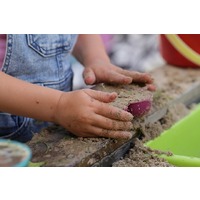Guest Blog: Science & Story in the Early Years
Author: Norah Colvin Date Posted:24 November 2022

We all know that science is important to our lives. We use it every day. But we are not just using science knowledge, we are using science literacy...
Science in our everyday lives
We all know that science is important to our lives. We use it every day, mostly without even thinking about it. When we look outside at the weather before we decide what to wear, we are doing science. When we boil an egg and when we know our coffee won’t taste good if it’s not made at the right temperature, we are using science. When we choose food to keep ourselves healthy and make choices to protect our planet, we are using science.
But we are not just using science knowledge, we are using science literacy. We are thinking critically as we make decisions for ourselves personally and for our communities and our planet. And we are thinking creatively when we use our science knowledge to solve problems, even something as simple as choosing the right material to keep a gate shut.
Children are born scientists
Children are born scientists with an innate curiosity and a need to find out about the world and their place in it. They are constantly observing, investigating, experimenting, making and testing hypotheses, and drawing conclusions, not only about the natural and physical world but also relationships and the human response to their inquiries.
You can see this in young children as they explore their environment, pushing and pulling, opening and closing, lifting and dropping. This can be observed in the 9-month-old in the high chair who repeatedly drops something to the floor, learning about gravity and whether the object will always fall (as well as how parents and others react). Of course, it is always important to do a risk assessment to ensure they don’t hurt themselves, for example on a hot stove.
It is these same characteristics we wish to encourage in our learners in the classroom. We want them to be curious, to observe their environment and everything in it, to investigate, to conduct experiments and to think critically about conclusions as well as creatively to solve problems.
Children love story
In addition to these scientific behaviours, children love story. It is through story that knowledge has been transmitted and humans have been entertained since the beginning of time, first through the oral tradition and then through the printed word. It is how language is learned and, through language, knowledge expands.
The English curriculum doesn’t have to have sole ownership of story and picture books. As the curriculum is becoming ever more crowded, we can extend learning by helping children see and make connections by linking learning across the curriculum. Picture books are a great way of doing this.
Picture books are remarkable
Picture books are remarkable. Where else can you find such a wonderful combination of beautiful text and amazing art? Picture books are like an art gallery in a book. They invite us to observe and wonder; to grow in empathy for others and to think outside our own circles, our own environment. They open up the world and a universe of ideas to children without needing to leave the classroom, though it is good to get outside to read and explore too. Picture books are one of the best ways I know of turning young children onto two of my favourite things — reading and learning.
In the next article, I will discuss reasons for using picture books in science lessons.
